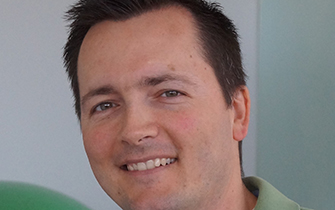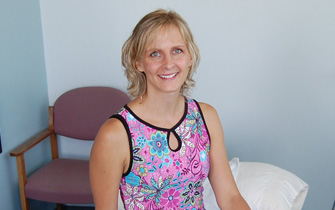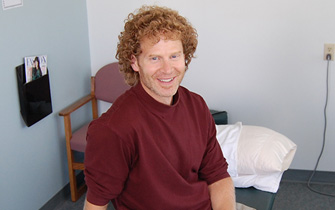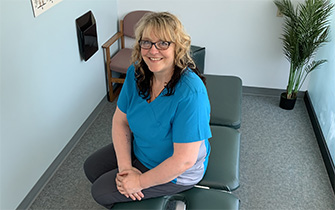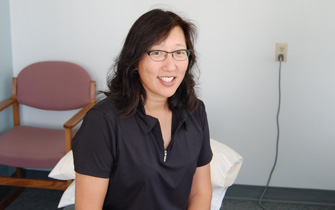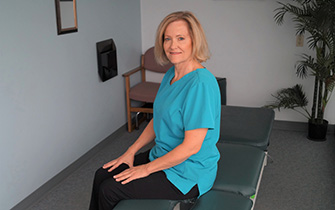Sports injuries require special treatment. Any time an athlete injures themselves, they require proper evaluation and a customized treatment plan to ensure the injury heals correctly and as quickly as possible.
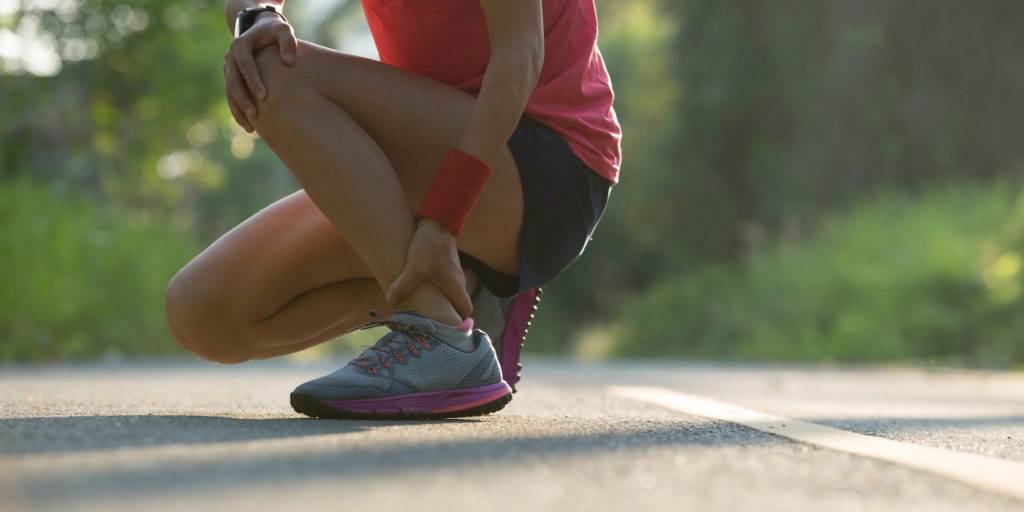
If you’re an athlete who has ever suffered a sports injury, you know that effective treatment will keep you playing or will get you back playing as fast as possible and will decrease your risk of re-injuring yourself.
What is sports physiotherapy?
Sports physiotherapy is treating or rehabilitating conditions that are a result of playing a sport or being active. Sports physiotherapy is also used to help prepare an athlete to return to their sport or activity.
Sports Physiotherapy is sometimes referred to as sports medicine, and it is essentially the same. Sports medicine can be done by a physician who can prescribe medications and order diagnostic imaging (X Rays, MRIs, etc).
What can sports physiotherapy treat?
Sports physiotherapy can treat all sorts of injuries as a result of sports like:
- Soccer
- Running
- Hockey
- Golf
- Weight lifting
- Tennis
- Lacrosse
- Martial Arts
- Gymnastics
- And more.
Some examples of injuries treated are achilles tendonitis, IT Band Syndrome, ligament tears/sprains, meniscus tears, muscle tears/strains, plantar fasciitis, rotator cuff injuries, shin splints, tennis elbow, and many more.
What do our sports physiotherapists do?
Our physiotherapists focus on more sport specific rehabilitation exercises and activities. Over our 113 years of combined experience dealing with sports injuries, there isn’t much our team hasn’t seen or treated. We’re dedicated to getting you back on your feet, and back on the ice, basketball court, soccer field, golf course or baseball field as fast as possible!
Sports rehabilitation may take more time than other types of treatment and it’s usually more involved as the stresses on our joints, muscles and ligaments during sporting activities are much greater compared to normal activities, and because of this, the rehabilitation program needs to include higher-end and more strenuous rehabilitation exercises to prepare the athlete for their sport.
Our team’s experience in the profession and foundational knowledge of healing times for when an athlete can return to their sport either modified or unrestricted is a necessity. Our staff has that experience:
- Brad Cunningham: Brad has been a team trainer for several years for both soccer and rugby. He also is a runner, biker, and cross country skier.
- Kathy Hayashi: Kathy has volunteered with various rugby and judo teams, teaches disabled skiers, and taught at the Learn To Run program at the Running Room. She is also an avid runner and golfer herself!
- Charlotte Dowhaniuk: Charlotte has volunteered with the Alberta Winter Games to treat female hockey players and the Alberta Summer Games for track and field players — she also continues to play hockey.
- Chad Burden: Since becoming a physiotherapist Chad has taken courses on sports and neuro proprioceptive taping, running technique and injuries, and education in fitting and prescribing orthotics. He still enjoys playing hockey and squash.
Additional treatments related to sports physiotherapy
Summit also provides many different treatments that can be done alongside other sports physiotherapy treatments including myofascial release/manual therapy, acupuncture, shockwave therapy, intramuscular stimulation (IMS), and more. Other additional treatments that help heal sports injuries are kinesio taping, bracing (if needed), modalities such as ultrasound, TENS, heat/ice, and cupping.
Achieve Peak Performance with Our Sports Therapy Team
Not sure which member of our team to work with? We can help! Contact our clinic today.
Frequently asked questions
Is it normal to feel scar tissue for a long time after surgery, even with physiotherapy?
Yes, it is normal to feel scar tissue for a while after surgery. It depends on the injury and how much scar tissue you feel. Scar tissue will reduce over time, but with major injuries or surgeries it may always be present.
When is using an ankle brace good for my injury?
In our professional opinion, the best time to use an ankle brace is at the beginning of the healing process (immediately after the injury) or when initially returning to sport. An ankle brace protects the ankle initially when it’s sore to walk on and when performing high level activity such as pivoting, cutting, stopping, starting, jumping, and impact. However, there has been a lot of debate around wearing braces — if you’re unsure about your brace give us a call and we’ll be happy to help!
Why do professional athletes’ injuries heal so much faster than mine?
Professional athletes’ injuries tend to heal much faster than regular athletes because they are diagnosed right away with X Rays or MRIs. If surgery is required, they get it immediately! Professional athletes also tend to have physio up to 6 days a week and are strong and healthy to begin with. However, they also play through a lot of pain (that we don’t see) and wait for the off-season to completely heal.
If you want to get back to your sport as fast as possible we recommend asking for a diagnosis as soon as possible and schedule regular physiotherapy appointments afterwards.
Why does it take so long to get an MRI for a sports injury?
It takes so long to get an MRI for sports injuries because there is an issue with the MRI waitlist in Alberta. It’s a part of the problem with the Alberta Health care system. Sports injuries are not treated any differently than any other injuries.
If you can’t wait, you can pay privately for one which is approximately $700 (depending on the body part) and get it within a couple of weeks. Some benefit plans cover a part of the cost (usually through their health spending account). However, not everyone has access to a good benefits plan or health spending account so with major injuries, this wait can hinder an athlete’s ability to get back to the sport that they love in an appropriate time frame.
What should I do while I wait for an MRI?
An MRI should only confirm what the doctor or physiotherapist already suspects, so nothing should change in your rehabilitation. So first, go to rehab and do what your physiotherapist or doctor asks you to do. Stay active, get sleep, and eat healthy. Don’t forget to exercise other areas of the body that aren’t affected by the injury.
If my injury feels fine am I able to jump back into sports?
You shouldn’t jump back into sports quite yet! The stresses your injured tissue experiences during your normal daily activity doesn’t compare to how much more stress and strain your affected tissue will undergo when you’re playing a sport. You need to rehabilitate the injury properly, do your exercises, perhaps wear a brace/use taping and progressively work up to playing to avoid further injury. We always recommend these tactics under the guidance of a physiotherapist.
If you want to work on healing your injury to get back to the sport you love, contact us today to schedule an appointment.
How to avoid common sports injuries?
Regardless of the sport you play, there are many actions that can help keep you safe. We encourage all athletes to ensure their own personal safety by following these tips.
- Stay active: Physical activity is one of the best ways to help prevent sports injuries. The more active you are, the stronger and healthier your body will be.
- Stretch after you play: To avoid the need for sports rehabilitation, make sure you’ve warmed up before you play, and only stretch after your muscles are warm. Not only will stretching help relieve soreness, and prevent injuries, but it can also improve your flexibility and overall health.
- Schedule rest days: You probably already knew this one — but making sure that you get enough rest and recovery time is one of the best ways to let your muscles repair themselves.
- Take care of yourself: The best way to avoid an injury or recover from an injury is through a healthy lifestyle. Drinking plenty of water and eating the right foods help build your muscles, while getting enough sleep allows your body’s tissues to recover.
- Stop when it hurts: At the first sign of pain or discomfort, stop playing. If you suspect an injury, call your doctor right away and book yourself an appointment with a physiotherapist — you don’t need a doctor’s referral.
By following our tips, we hope you’ll remain fit and healthy all season. But if you find yourself dealing with a possible injury, please don’t hesitate to contact us. Our doors are always open to both new and current clients.
Ready to get back to the sport you love?
Consider sports physiotherapy and contact our team today to book your appointment.

